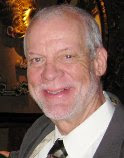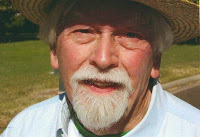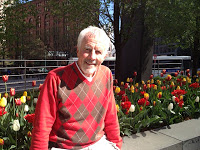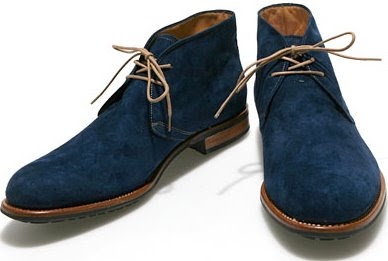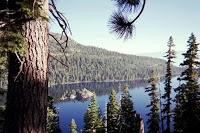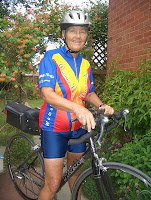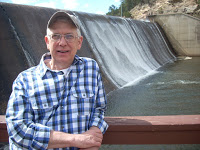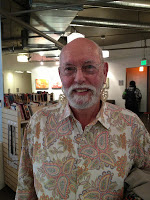The writer Arturo Islas once wrote, “Much of my terror can be traced to childhood, terrors about being Mexican and about Mexicans.” How well I understand this premise, for I too have always lived in bilateral worlds, arenas that often fail to foster a safe and empowering ambiance regardless of the direction in which I gravitate. Rather, like a marionette pulled first by the strings of one command, then by the contortions of another, I perform my awkward gyrations wearing a supercilious smile on my polychromed mask.
I sit at my mother’s house in El Paso, a plateful of campechanas, laberintos, pan de huevo and a earthenware pitcher of warm champurado, our evening repast, as I endeavor to draw out the voices of her past, voices that will all too soon dissipate with the hot desert wind like a monsoon storm pelting its contents on a weathered, sun-bleached arroyo. In spite of her fragile health, she makes her way from the kitchen table at which she has been seated to the stove, constantly vigilant of her olla de frijoles and chilaquiles simmering on the back burner…not bad for the 94-year-old matriarch of my family! The ravages of time herald her toward the grave, but at least her mind
remains agile, quick to partake in a pilgrimage back to the chronicles of her past.
Unbeknownst to her, these episodes take on an almost mythical context, resulting in my own awakening as she fleshes the past like a 45 rpm record speeding through time and space, hovering momentarily, and dying off in a drone of silent eternity. I sit opposite her, my mind formulating scenarios of lost worlds, discerning images I recognize only
via cracked, sepia photographs, hearing whispers of melodies like the calling of some primordial memory in the distant crannies of my mind. I sit, eyes riveted upon those of this survivor of life’s labyrinthian canyons, harvesting any and all treasures from the depths of her soul…vignettes of my past, oracles of my future. Off in the horizon, I begin to hear the whispers of the blind soothsayer lamenting the blustery storm descending upon me.
The television perched on the nearby table, my mother’s companion and confidante, is perennially turned on, even now as we speak, perhaps an unspoken reminder that these images, unlike the canonized bones confined in silent graves, are immutable, forever authentically human. As my mother catalogues her life experiences, recounting moments of innocence, of sin, of stooping, mundane life, I occasionally glance at the screen, not in distracted discourtesy of my mother’s odysseys, but curious at the faces flitting in and out of the telenovelas, echoing some private torment. I make mental note of how the media acculturates and molds the Latino cosmology into the
nebulous American dream, too often purchased with one’s own soul as Mephistopheles offers the viewer eternal bliss for 30 pieces of silver. I smile at the antics of star-crossed lovers and ego-driven behemoths as they saunter through their travails in the predictable, tawdry novelas. I know that in these quixotic episodes of life won and lost, no shade of gray dares to besmirch the canvas of paint-by-the-numbers landscapes. Invariably, the innocuous but righteous and anguished victim, usually a character of Christian virtue and naive expectations, will overcome, through tenacity, faith, and maybe just a dose of divine intervention. On the other hand, the villain, more often than not the villainess, that catty bitch, that daughter of Eve, with over-plucked eyebrows and pallid skin pulled back tautly against her scalp, will earn her just retribution, and like Marlowe’s Barabas will be purged in boiling oil for insidiously betraying all godly virtue. I catch snippets of a telenovela, Cosas de la Vida Real, and increasingly am drawn to the transparent plot line, the desecration of my own Holy of Holies. I flit between two realities. My mother’s hand still guides me through a maelstrom of adventures, but like Pandora I am drawn to a necrotized sorcery of the television screen. All too soon, I am humbled, enraged at the obviously licentious and horrific portrayal of the life I know all too well, that of a gay Latino, and the tragic truth is that although I am haunted by a retelling of antiquarian lies, I hope for a parting of the veil and the manifestation of ethereal light. Alas, the portrayal of gay pedophiles and their immoral denials of all that is sacrosanct indoctrinates the masses to lies perpetrated by fear and convenience. As I vacillate between giving ear to my mother’s liturgy while simultaneously taking notice of the lewd permutations foisted on the screen in the name of moral turpitude, I obviously betray the controlled seething raging within me, for my mother glancing over at the screen, silences her voice momentarily, perhaps in silent shame, perhaps conflicted between her own concept of reality and my own. Quite possibly, she instinctually comprehends and even embraces my anger, my pain, provided, of course, all windows facing the neighbors are screened off. Perhaps she grasps the notion that I thrive in many discordant dimensions, most of which remain shadowy and discombobulated. However, since we have never approached the unbroachable, I don’t really know and since the Square-toed One is relentless hobbling in her direction, I know I shall never truly know. And thus, the story telling continues amidst stories that remain imprisoned.
There are so many silent poems I wish I could have shared with this woman, poems that are but gossamer flickers of refracted light streaming from a distant galaxy. I want to share my suicidal torments at being branded a joto in high school, in spite of the fact that in my innocence, I didn’t even know what a joto was. I want to whisper my
shame when I allowed myself to be just momentarily but still inappropriately touched for the first time by a cook at a greasy spoon where I worked as a dishwasher when I was sixteen … a memory that seared my blood but nevertheless sweetened my cornucopia of sensory delight and longings. I want to ask my mother whether my uncle, my tocayo, a man who sometimes threatened to castrate me as a child for being too sensitive, might in fact have been battling with his own reproaches. I want to recount lifetimes spent in front of the sacristy entreating the Nazarene, likewise rejected and crucified, to intercede on my behalf, miraculously purging my sinful inclinations to be held, touched, loved by one of my own. Regretfully my prayers filter like incense to the nave of an existentialistic eternity, His mournful eyes only conveying an I-too-am-as-helpless-as-you gaze down upon me. I want to know whether she would ever cast me upon stony, unfallowed ground for daring to bring a blue-eyed devil into her home, once mine too, and introducing him as my beloved, my champion, my solace and hope. However, my voice is silenced by the pragmatic practicalities vaulted within our respective lives. After all, we are separated by layers of cosmic convolutions labeled life experiences, she being enthroned in her Latina, Catholic, patriarchal world; me nurtured in the arms of my hidden truth, my secret love, my unbridled passions.
Instead I swallow some of my bile engorging itself within my mouth, and I regain my footing on the fraying tightrope, a tightrope that like a Mobius strip has no beginning and no end. Only in time will I come to realize that my mother and I are carved of the same rootstock, having both been nourished by the same nebula that continues to cultivate our spirits. She knows and she accepts in spite of telenovelas’ maudlin attempts at indoctrination. Thus, in silent gratitude, I kneel before the goddess of my idolatry, placing at her feet perfumed honey, molten mercury and sea salt nestled upon a cinnabar bowl, for though He closed His eyes in despair, her eyes were steadfastly directed toward constellations unseen, giving me the confidence to stave off my own martyrdom. I no longer pay heed to the monitor’s nepotism, immersing myself unequivocally in the banquet of my mother’s own voice. And at that milestone moment, the terror of my childhood metamorphoses into cogent jism of stalwart life, and I feel that He who once asked that the cup be removed from His hands imbibes with me in conjoined, unashamed empathy.
About the Author
Cervantes wrote, “I know who I am and who I may choose to be.” In spite of my constant quest to live up to this proposition, I often falter. I am a man who has been defined as sensitive, intuitive, and altruistic, but I have also been defined as being too shy, too retrospective, too pragmatic. Something I know to be true. I am a survivor, a contradictory balance of a realist and a dreamer, and on occasions, quite charming.
Nevertheless, I often ask Spirit to keep His arms around my shoulder and His hand over my mouth. My heroes range from Henry David Thoreau to Sheldon Cooper, and I always have time to watch Big Bang Theory or Under the Tuscan Sun. I am a pragmatic romantic and a consummate lover of ideas and words, nature and time. My beloved husband and our three rambunctious cocker spaniels are the souls that populate my heart. I could spend the rest of my life restoring our Victorian home, planting tomatoes, and lying under coconut palms on tropical sands. I believe in Spirit,and have zero tolerance for irresponsibility, victim’s mentalities, political and religious orthodoxy, and intentional cruelty. I am always on the look-out for friends, people who find that life just doesn’t get any better than breaking bread together and finding humor in the world around us.
